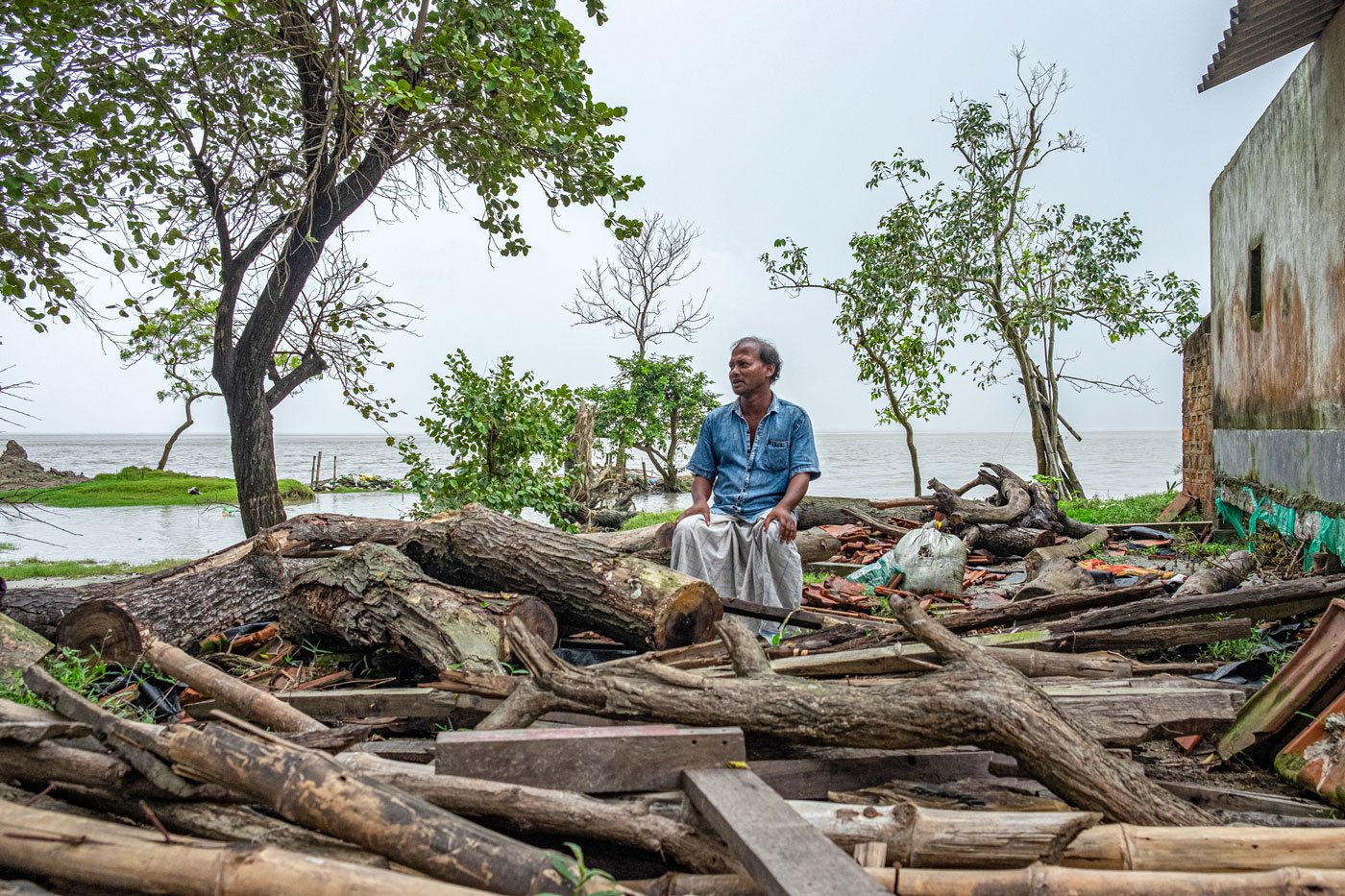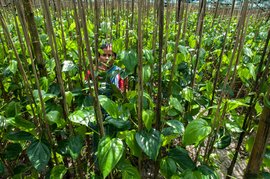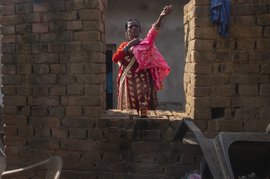A burst of activity rises in the ferry docking at Ghoramara island in early September. Men, women, children, and cattle too, hurry to get off the boat and go about the day’s business. Having taken shelter elsewhere during the high tide, often with relatives, they are returning home to the island after the waters had receded. The ferry, which takes 40 minutes from mainland Kakdwip to reach the island in the Sundarbans delta, carries such passengers to and fro at least twice a month. However, this routine belies the long struggle of Ghoramara's villagers to survive on their small island located in West Bengal’s South 24 Parganas district.
Frequent cyclones, rising sea levels and heavy rains – markers of climate change – have made life difficult for Ghoramara’s people . Floods and soil erosion over the decades have turned their isolated homeland into a floating piece of land in the Hooghly estuary.
When Cyclone Yaas made landfall in May, Ghoramara, in Sagar block, was among the worst hit areas in the Sundarbans. On May 26, the cyclone along with high tide had breached the island’s embankments and inundated it within 15-20 minutes. The islanders, who had borne the impact of cyclones Amphan (2020) and Bulbul (2019) earlier, faced destruction again. Their homes were ripped out, and entire storehouses of paddy, betel crops and sunflower fields were washed away.
Abdul Rauf’s house near Khasimara ghat was destroyed in the cyclone's aftermath. “We had no food for those three days and survived on rainwater, and were protected by just plastic sheets,” said Rauf, a tailor who works in Kolkata, about 90 kilometres away. When he and his wife fell ill, “everyone suspected that we had Covid,” he said. “Many had fled the village,” added Rauf. “We lay there, unable to escape to safety.” It was when the block development officer was informed that Rauf and his wife received medical attention. “The BDO asked us to reach Kakdwip by any means possible. He made arrangements for an ambulance from there. We had to spend about 22,000 rupees [on medical care].” Rauf and his family have been living in a shelter on the island ever since.
Many whose homes were destroyed were moved to temporary shelters. Residents of Mandirtala village are housed at a shelter in Tank Ground near Mandirtala
bajar
(bazaar), the island's highest point. Some of them set up camp on a narrow road nearby. From Hatkhola, Chunpuri and Khasimara areas of the island, 30 families were temporarily sheltered on Sagar island, to the south of Ghoramara. They have since been allotted land there, to relocate.
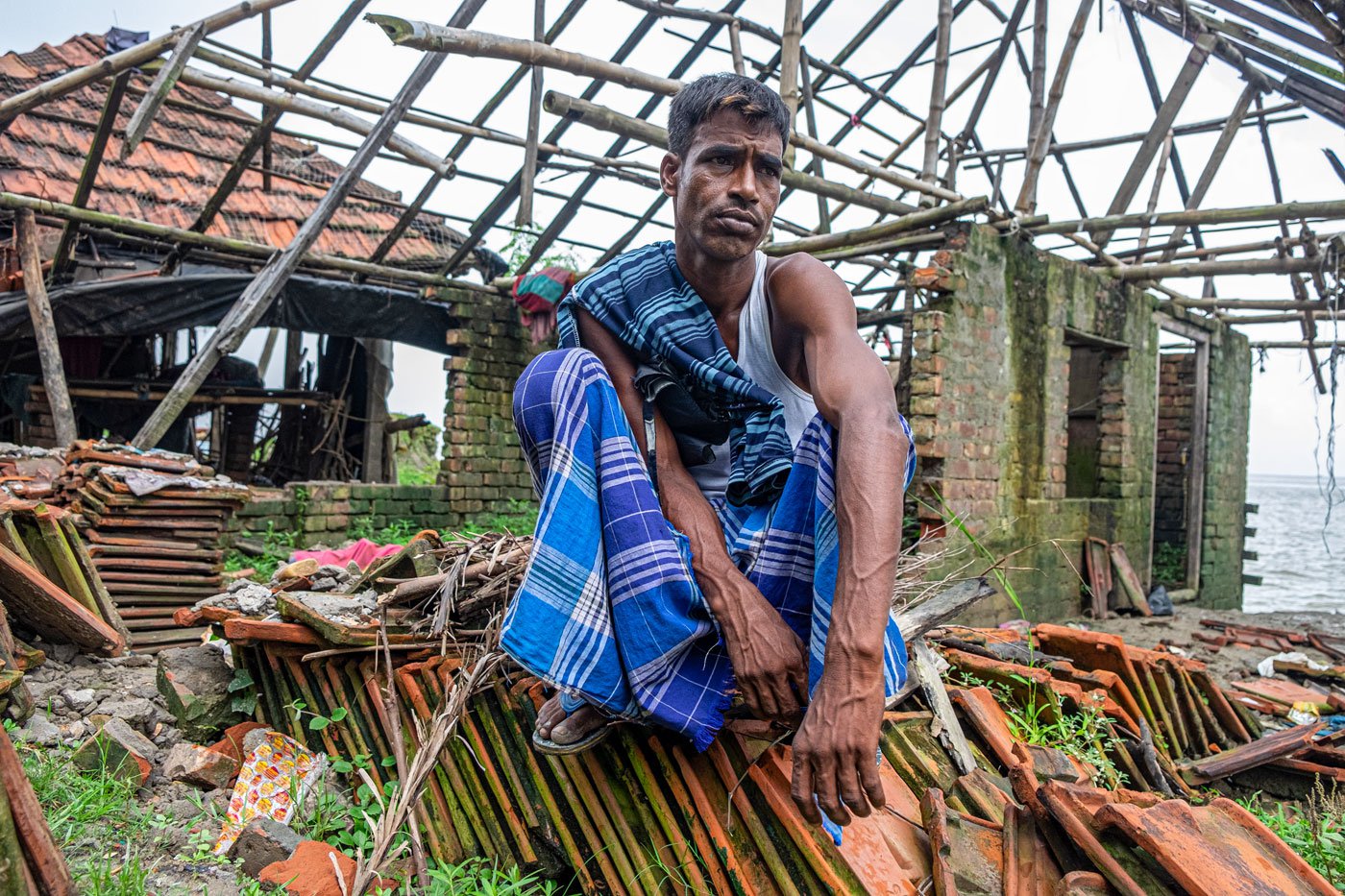
Rezaul Khan's house in Khasimara was damaged by Cyclone Yaas. He and his family have been rehabilitated in Sagar island
Rezaul Khan's family is one of them. His house in Khasimara is in ruins now. “I have to leave the island, but why should I?” he told me on a stormy day, sitting in a dark attic of a mosque that was damaged in the cyclone. “How can I leave my childhood friend Ganesh Parua? The bitter gourd from his garden was cooked for my family’s dinner yesterday,” he said.
Even before the villagers could recover from the damage, recurrent tidal waves brought on by Yaas started flooding Ghoramara in June, which was followed by a deluge of monsoon rain. Worried about the disastrous consequences of these events, the state administration,
began to rehabilitate
the residents to prevent loss of life.
"There was nothing in my shop those days [after the cyclone] except salt and oil,” said Amit Haldar, the owner of a grocery store in Mandirtala. “Everything was drowned in the tidal waves. None of our elders on this island had seen such huge waves before. They were so tall that most of us had to climb on trees to survive. Some of the women were tied to trees at the high points [of the island] so that they would not be swept away. The water level reached their necks,” Haldar said, adding, “We could not save most of our cattle."
According to a 2014 study on the climate change crisis in the Sundarbans, rising sea levels and complex hydro-dynamic conditions have caused severe coastal erosion in Ghoramara. The island's total land area decreased from 8.51 square kilometres in 1975 to 4.43 sq. km. by 2012. The study observed that the rate of migration from the island was high due to repeated displacement and gradual loss of ecosystem. Ghoramara’s population, the authors added, had decreased from 5,236 to 5,193 between 2001 and 2011, which could be attributed to migration.
Despite their misfortunes , people of Ghoramara stick together for support. On that day in September, everyone at the shelter in Hatkhola had thrown themselves into helping with preparations for six-month-old Avik’s annaprashan , a ceremony where a baby is fed rice for the first time. Their shrinking land forces these environmental refugees to reconcile to the unpredictability of their lives – so they rebuild their homes or go in search of new shelter.
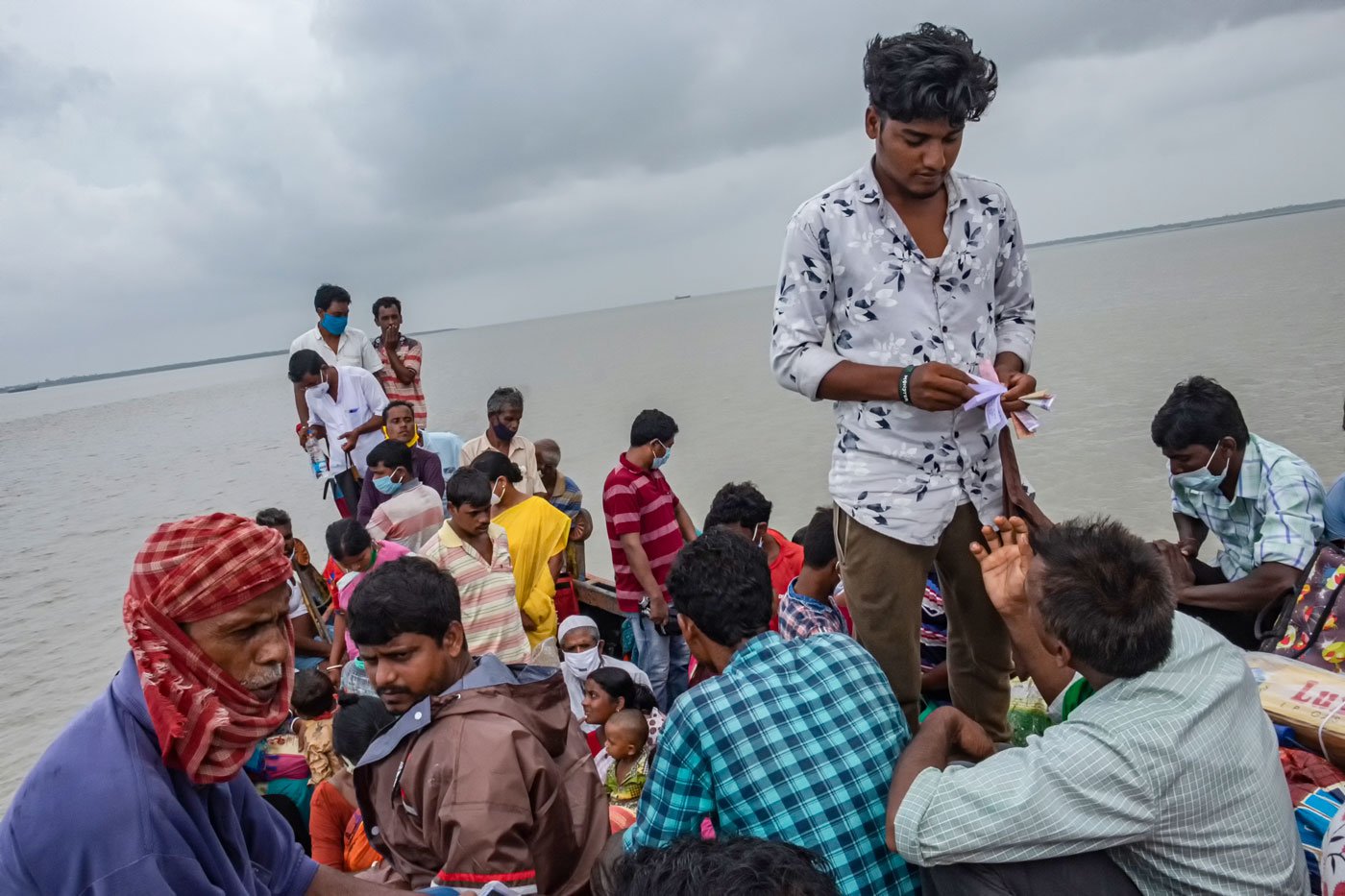
On the ferry from mainland Kakdwip, Ghoramara's residents return after the high tide
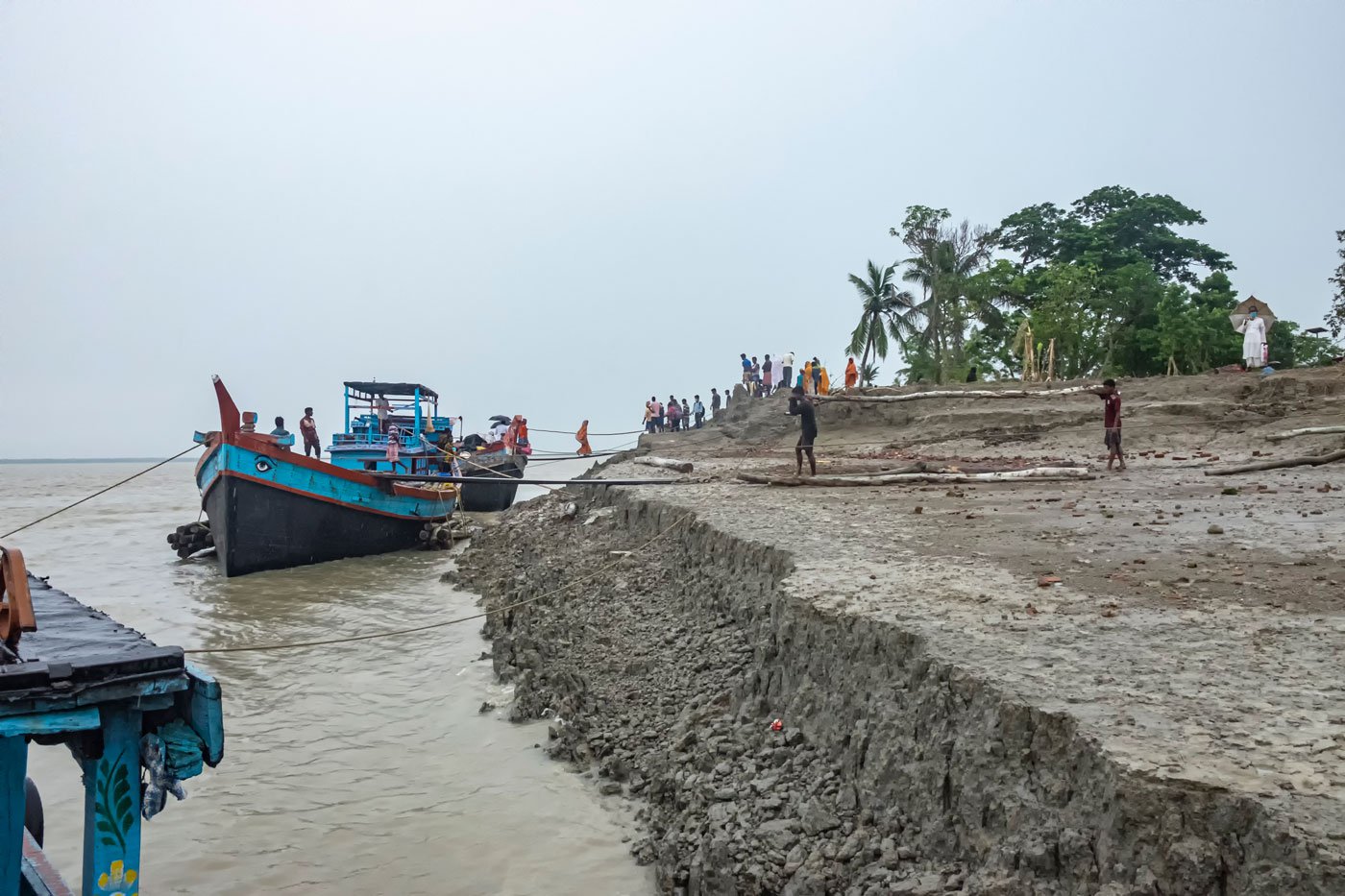
On May 26 this year, Cyclone Yaas along with high tide had breached the island's embankments and left it inundated
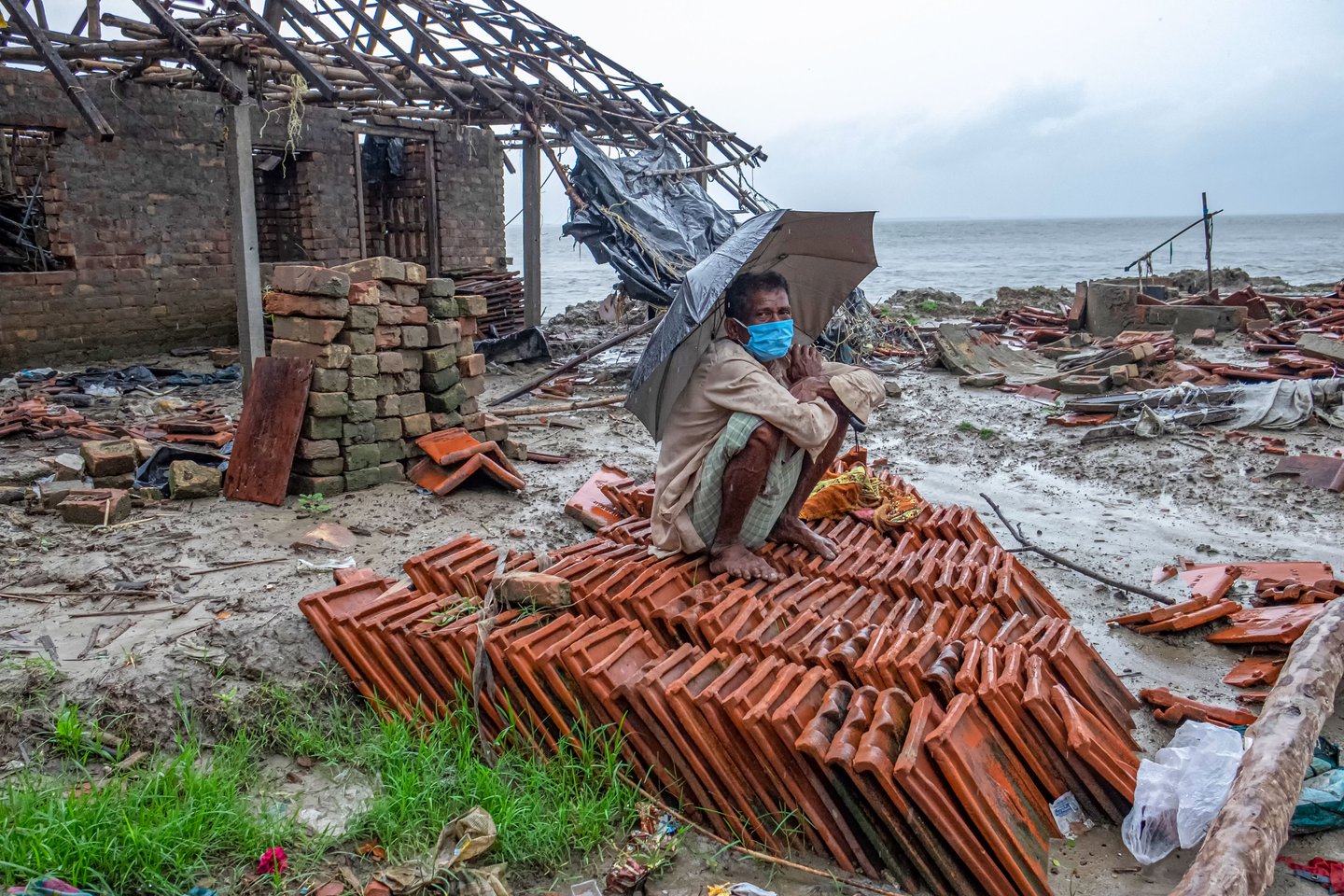
Inhabitants of the flood-prone island survive under the open sky in the hope of rebuilding their lives
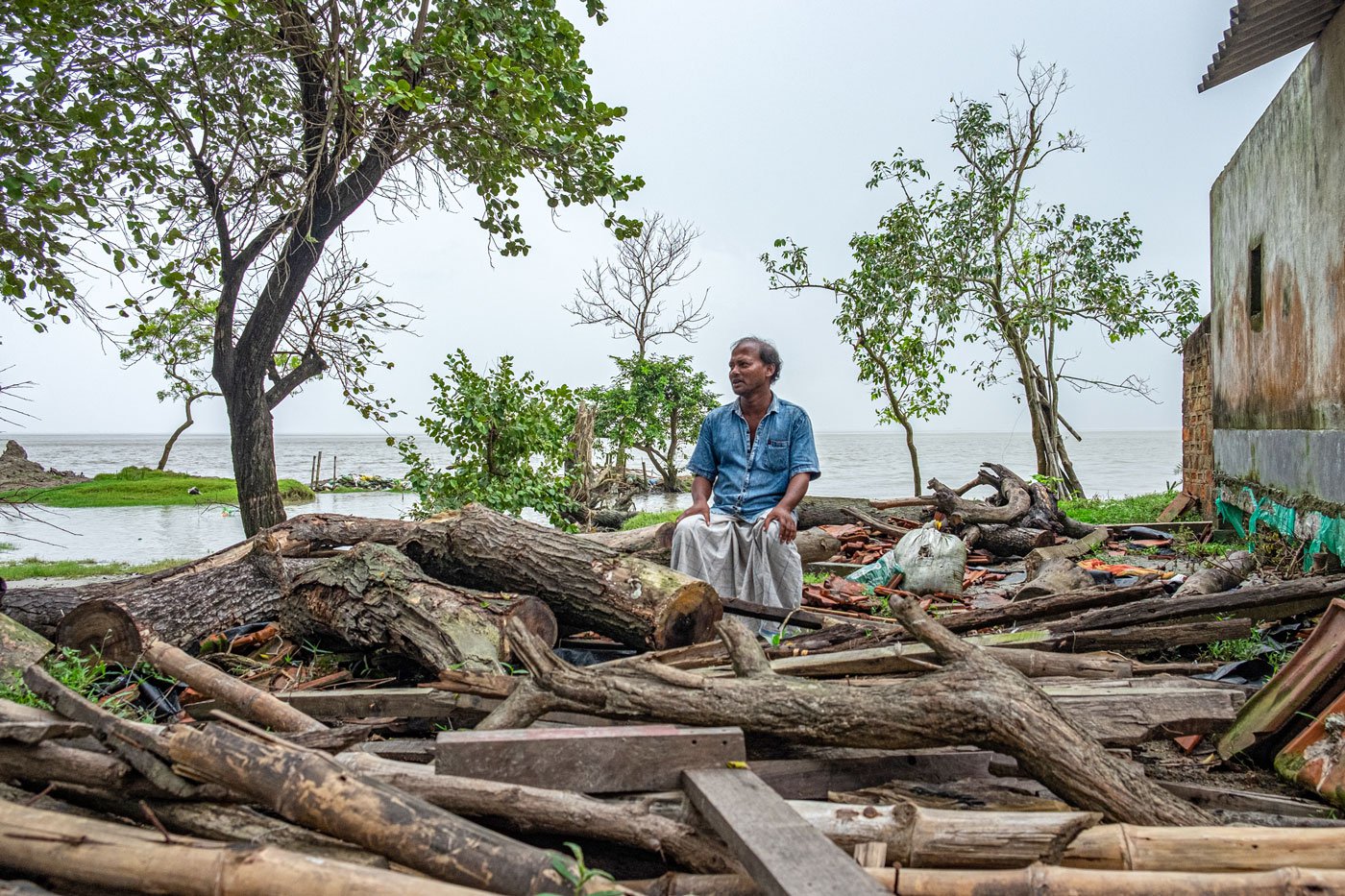
Sheikh Sanuj reminisces about his home in Khasimara before leaving Ghoramara for good and relocating to Sagar island
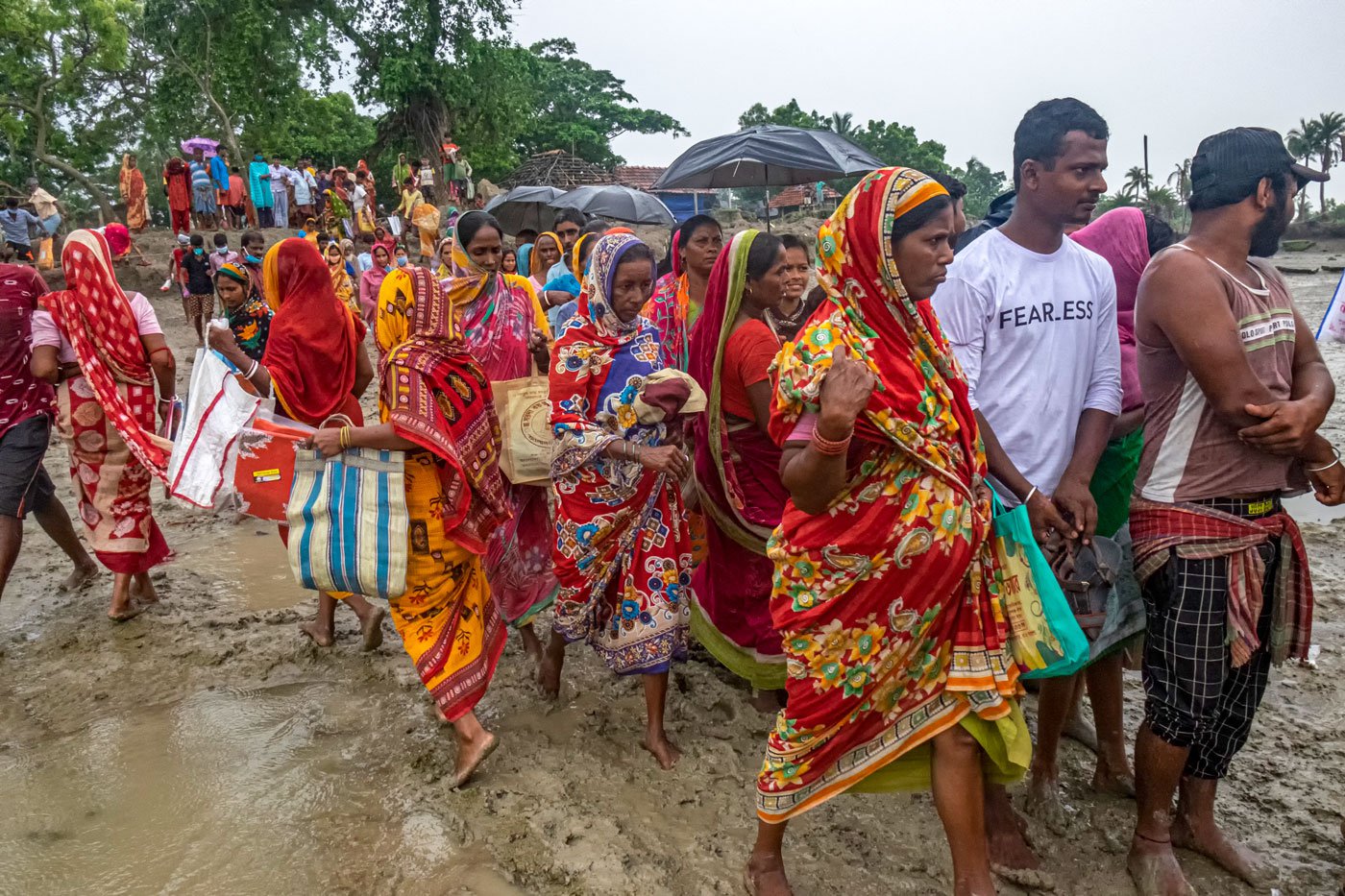
People wait for food in Khasimara ghat; they have have been surviving on relief after their homes were destroyed by Cyclone Yaas
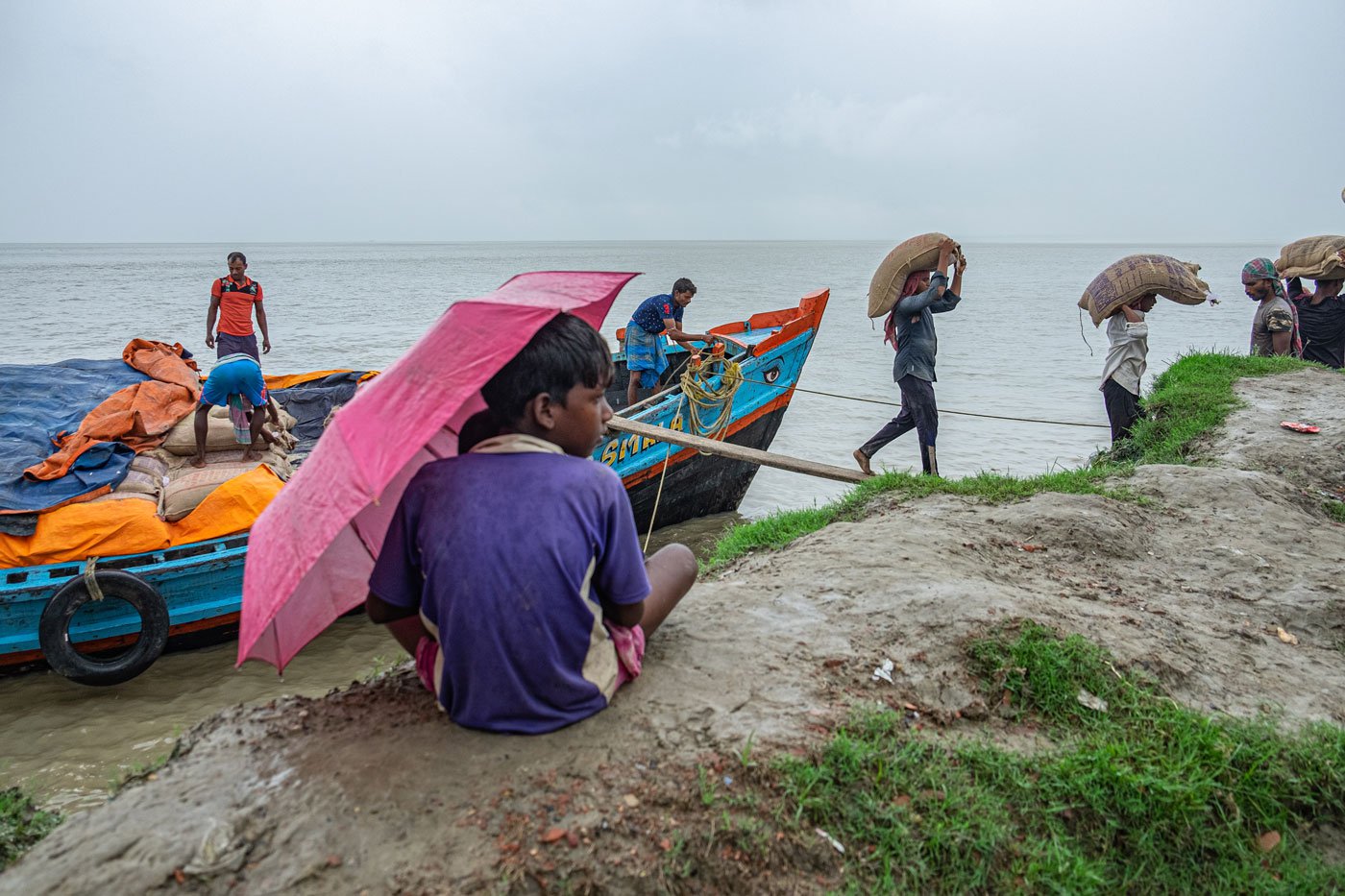
Food grains and rations arriving by boat at the Khasimara ghat
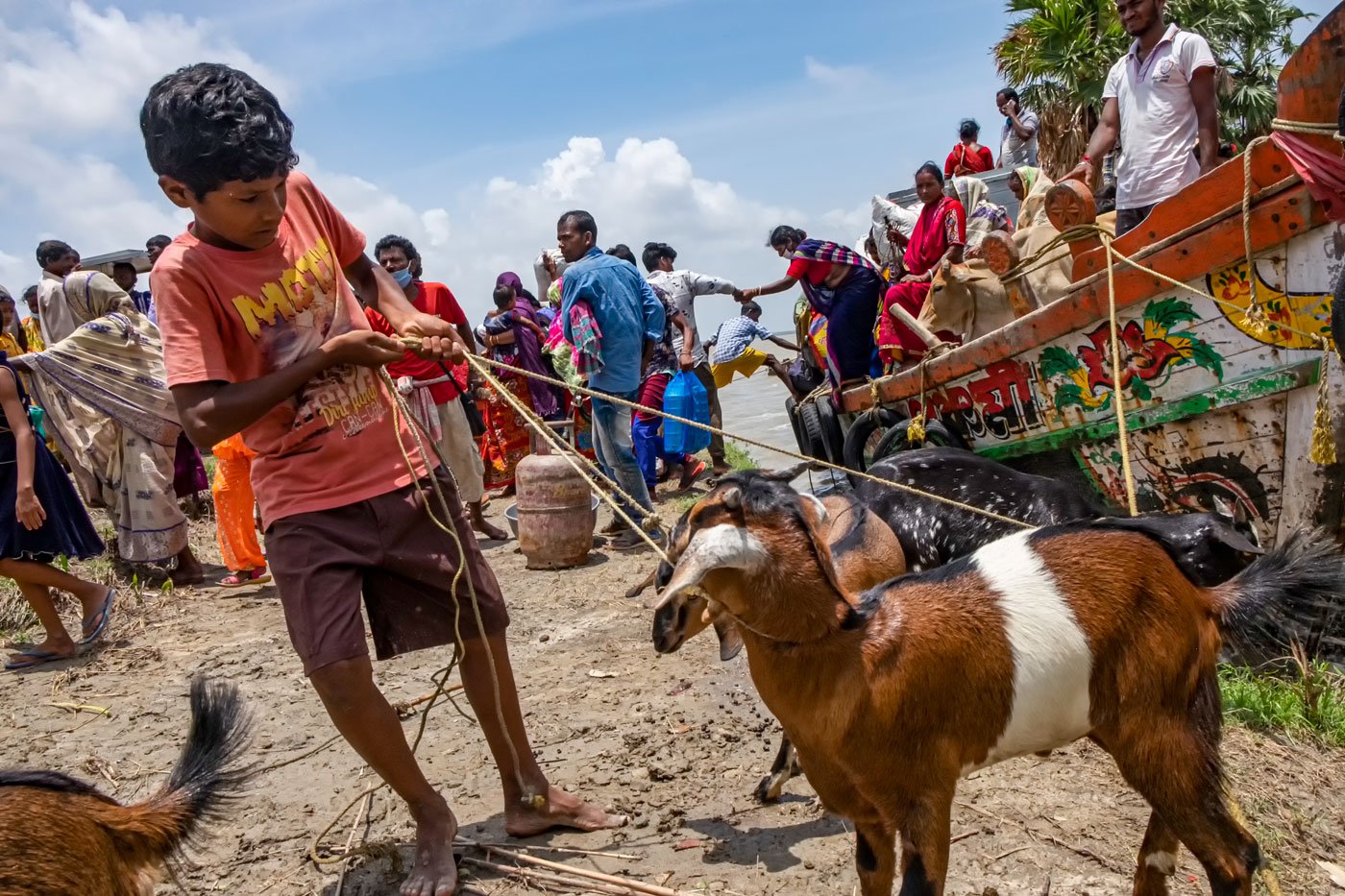
Men, women, children and cattle getting off the ferry, all in a hurry to return home
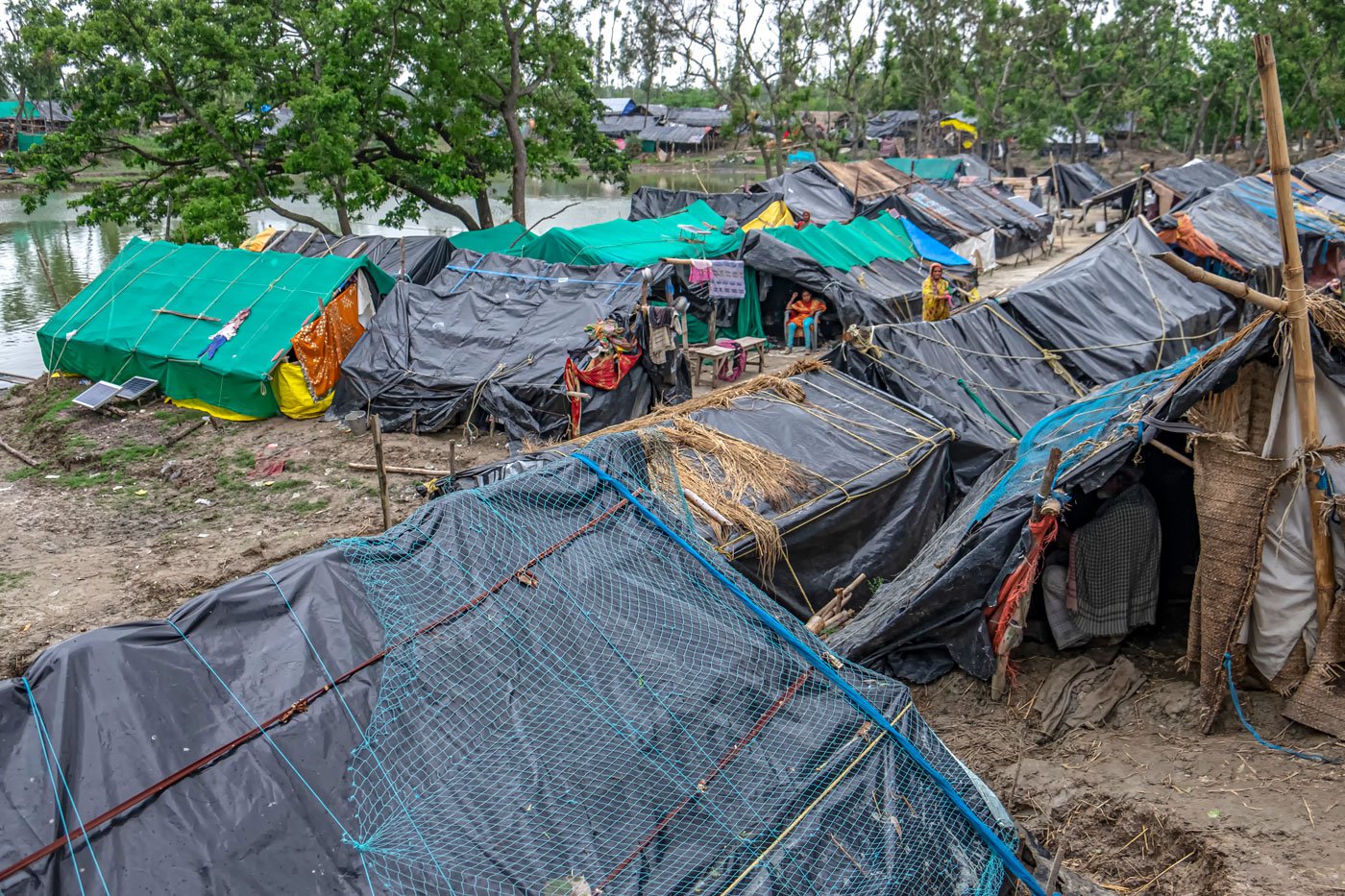
Temporary shelter in Tank Ground near Mandirtala bajar , Ghoramara's highest point. Nearly a third of the villagers sought shelter here
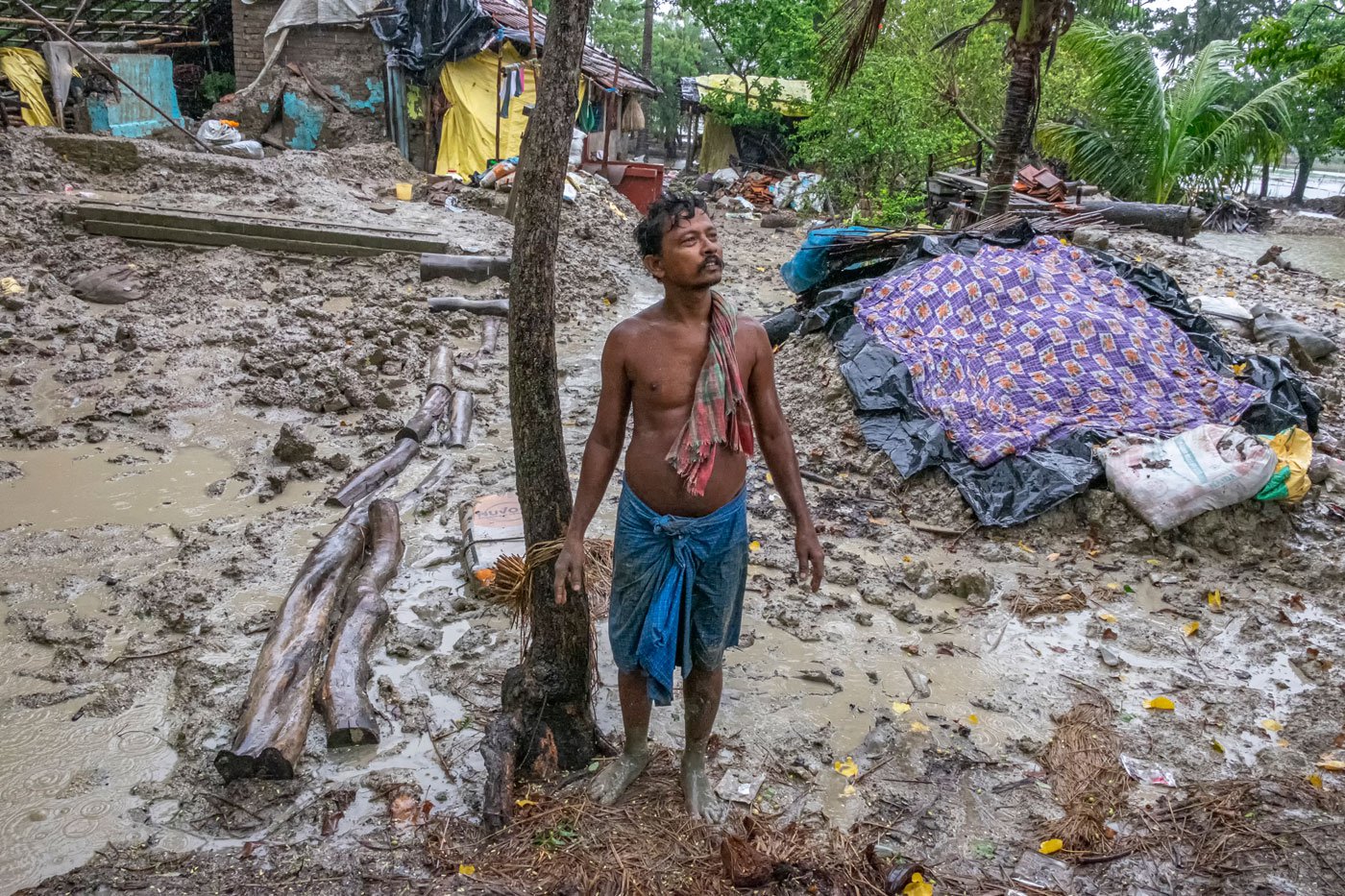
Amit Haldar standing near his damaged house. He lost all the goods that were stored in his grocery store near Mandirtala bajar
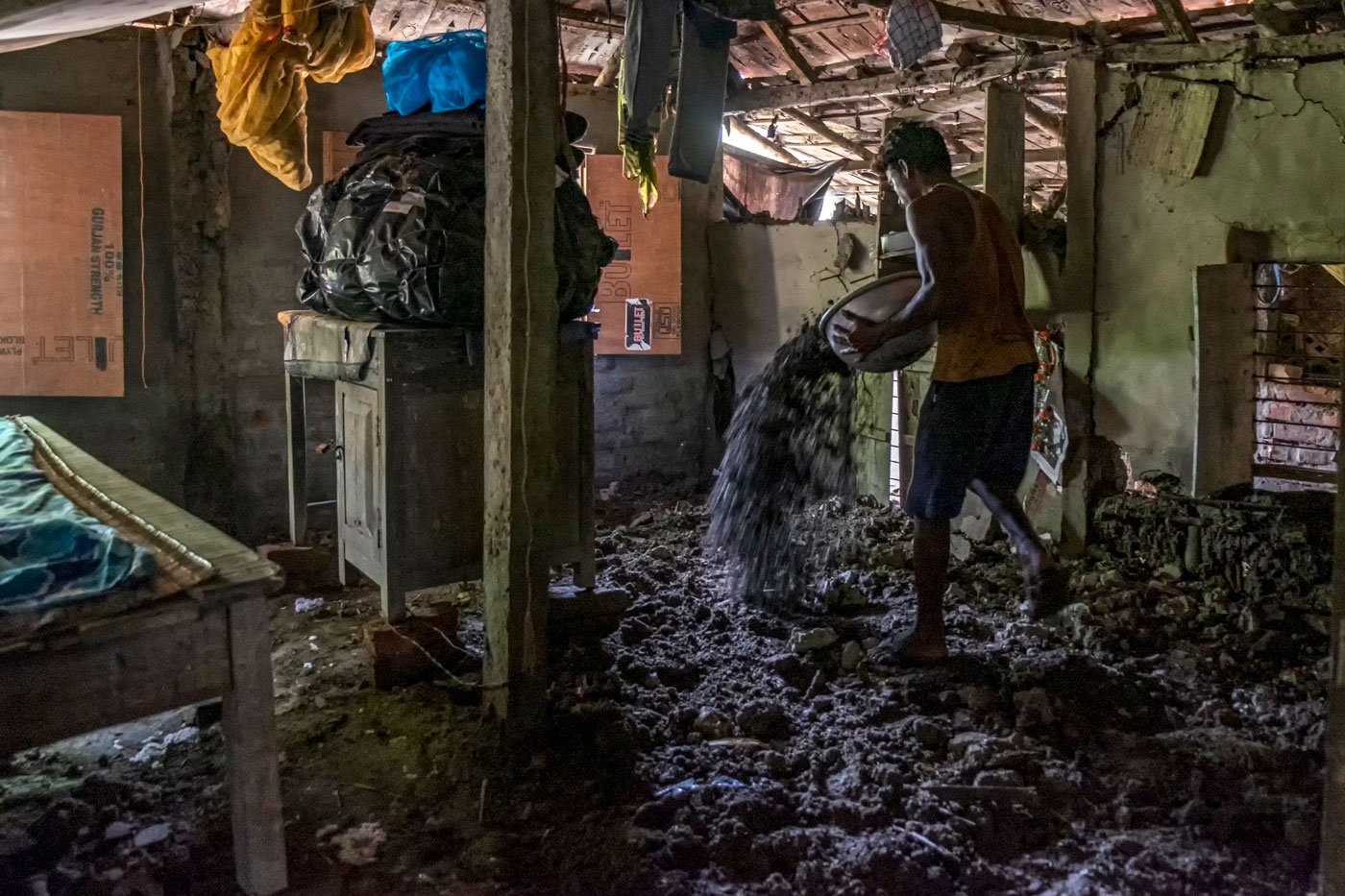
Soil being spread on the wet floor of a house near Khasimara ghat to make it habitable
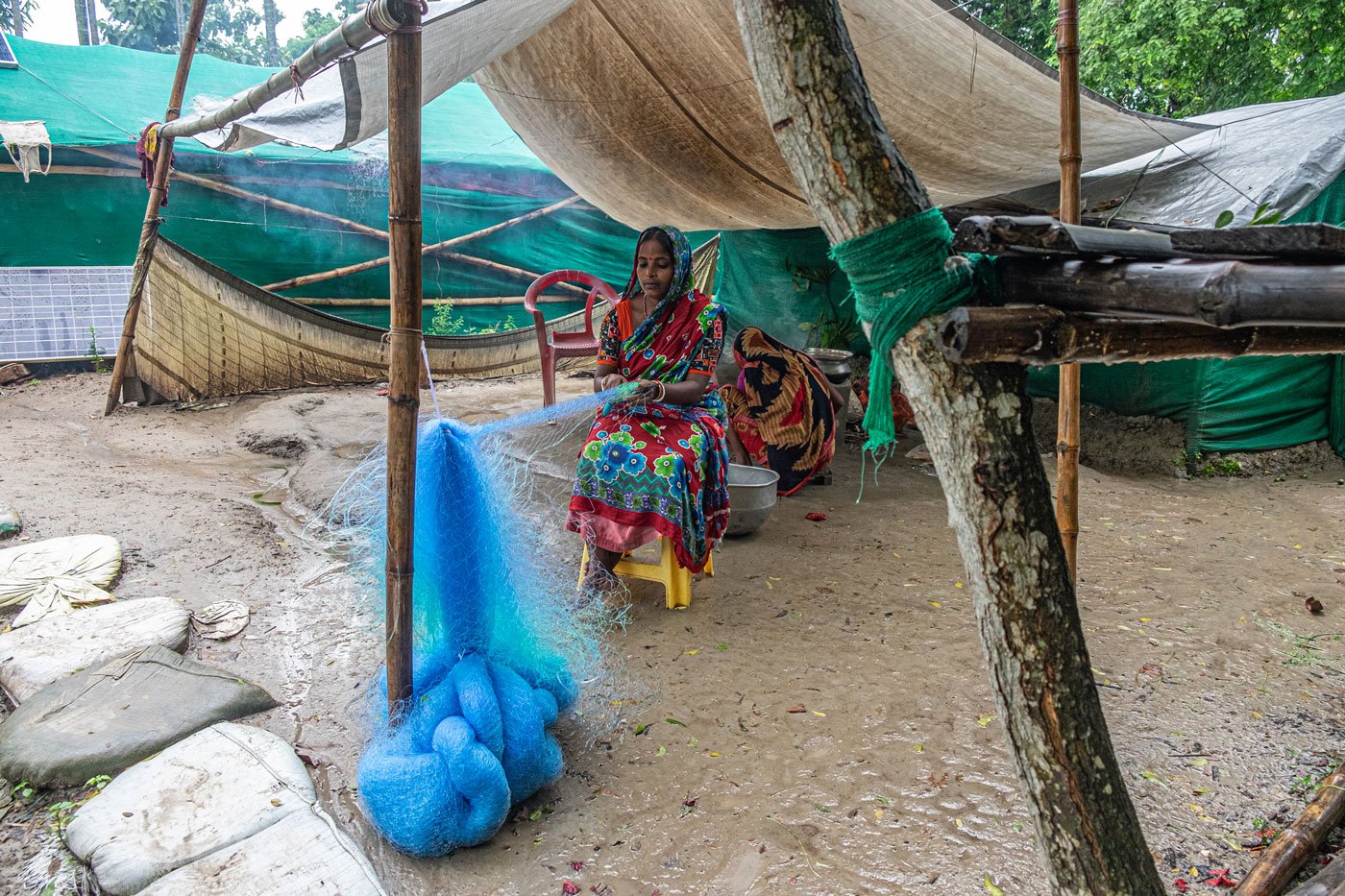
Thakurdasi Ghorui weaves a net near the temporary shelter in Hatkhola. She and her family will be relocated by the government
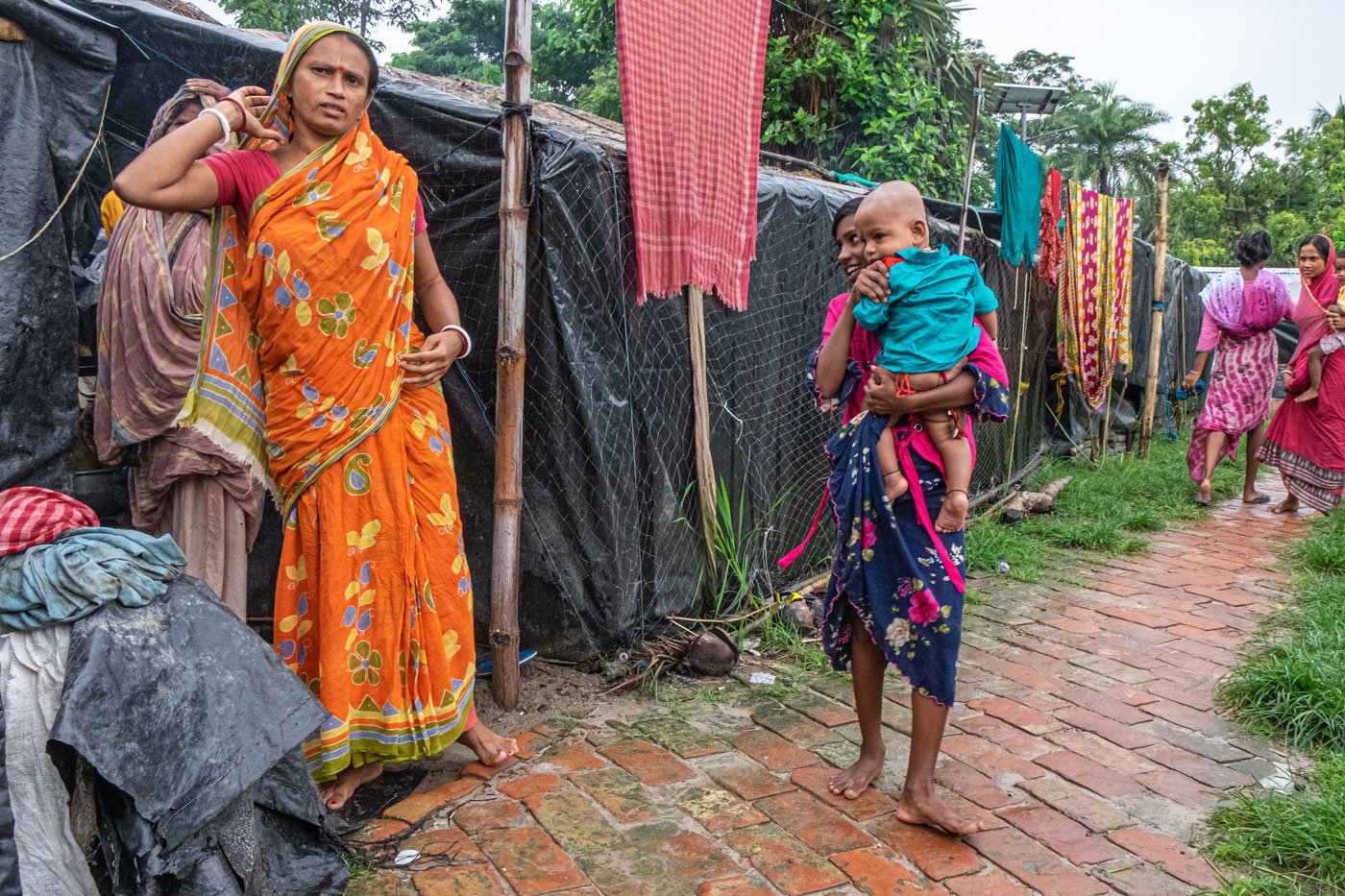
Kakli Mandal (in orange sari) at the camp in Hatkhola. Her family is one of the 30 being moved to Sagar island
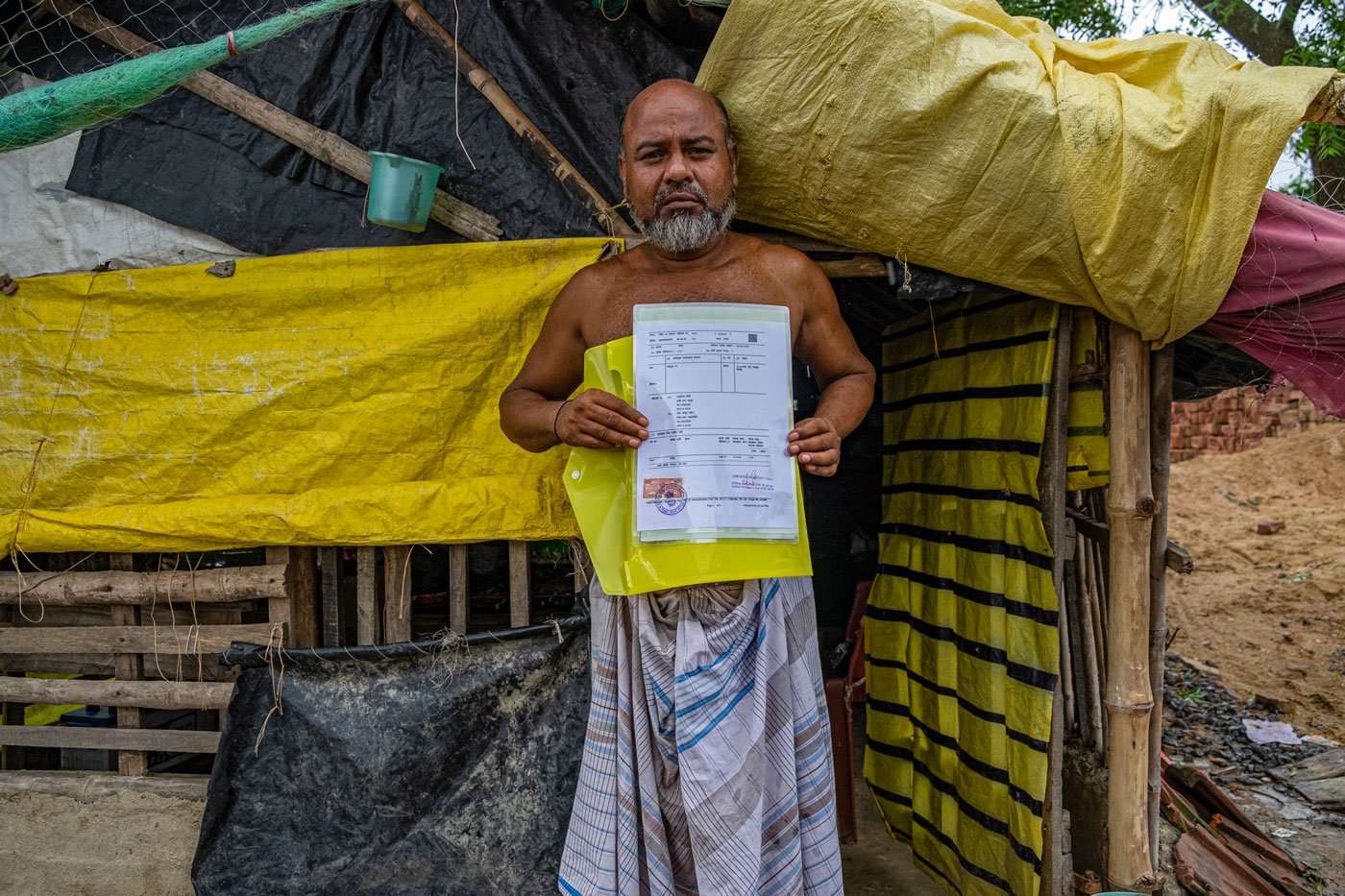
Abdul Rauf of Khasimara holds up the title of the land allotted to him on Sagar island
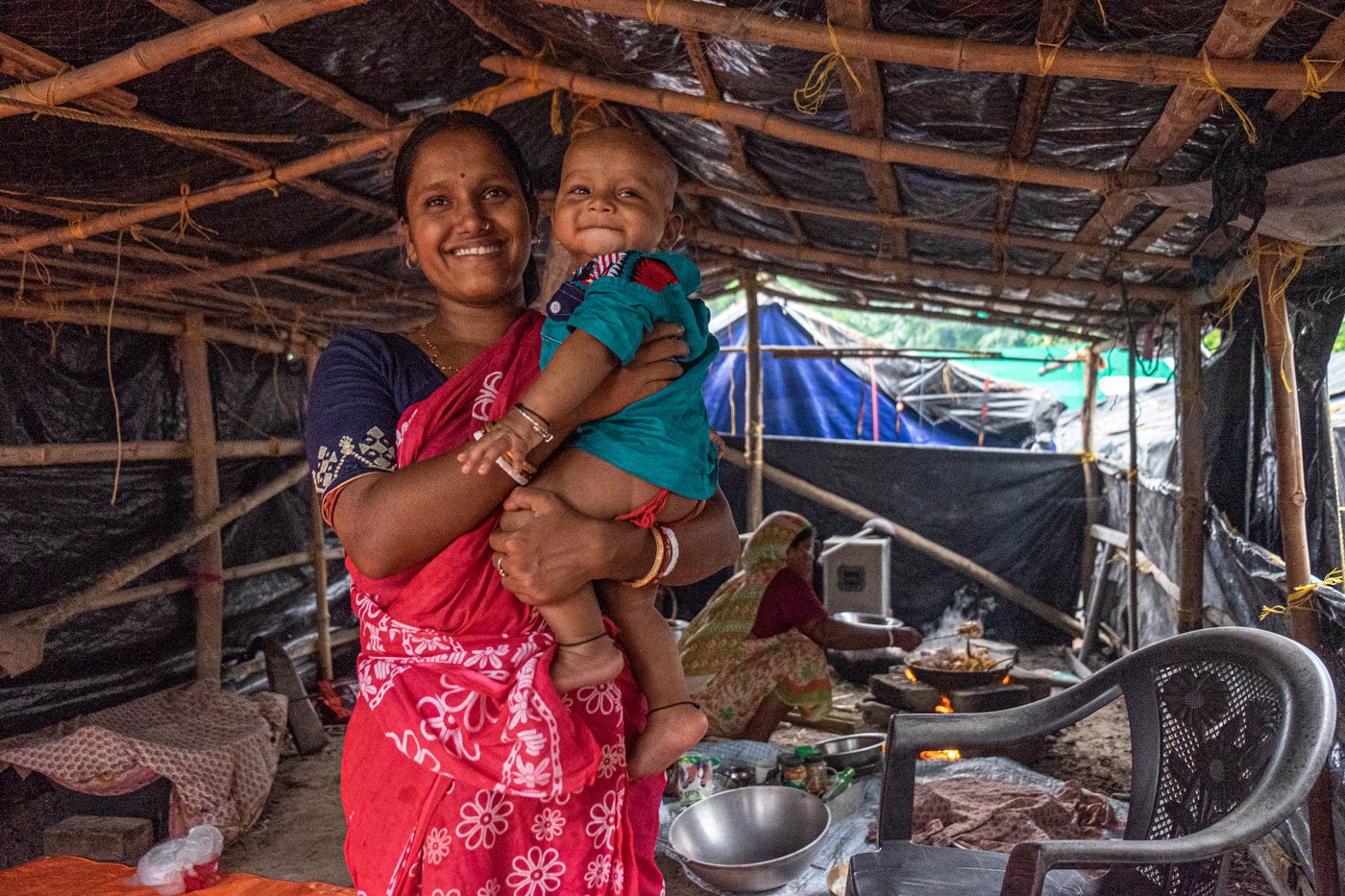
Baby Avik and his mother at the Hatkhola shelter before his annaprashan ceremony on September 9. Others in the camp help with the cooking
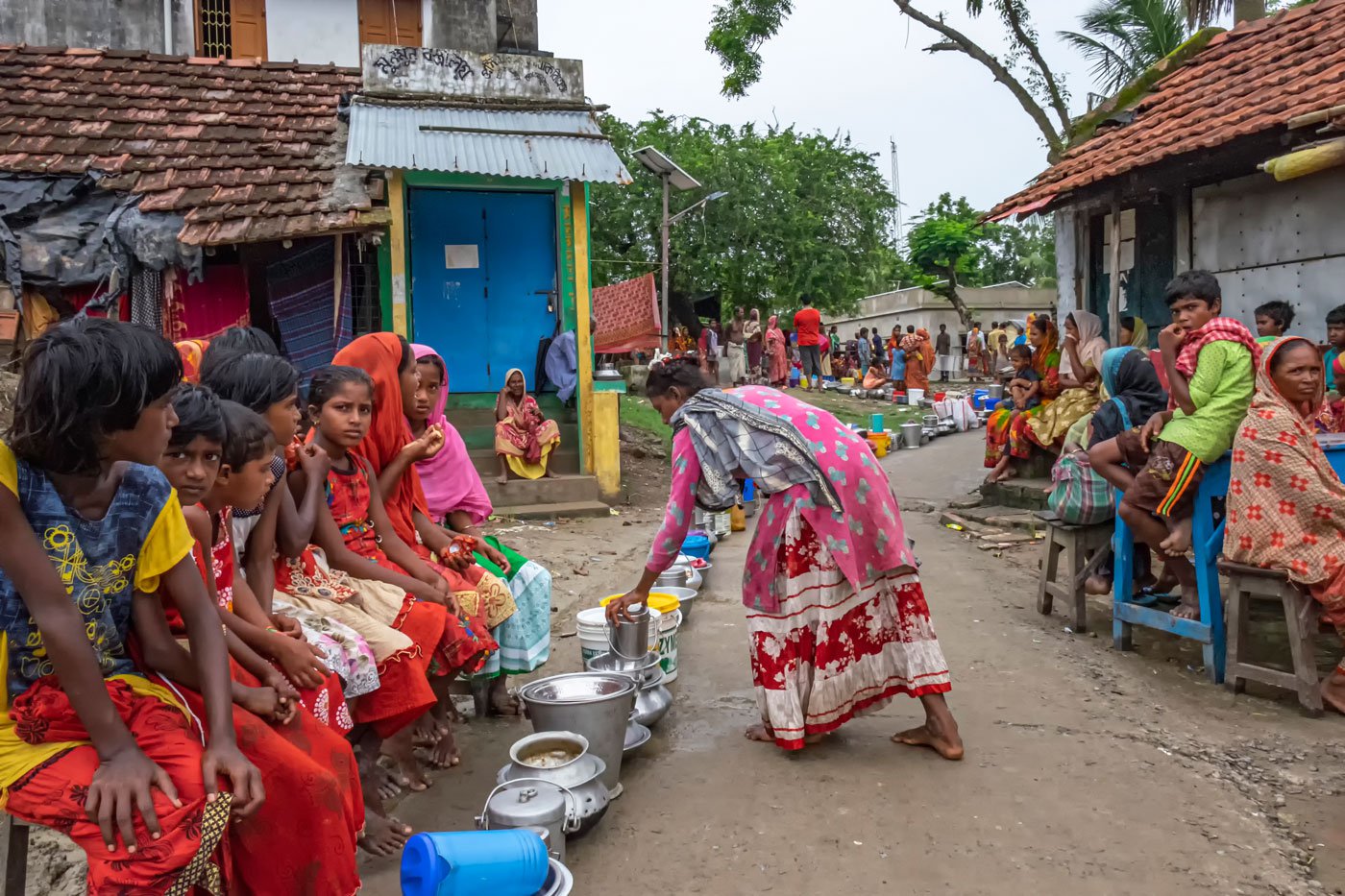
A long queue of people waiting for lunch to be served at the Tank Ground shelter near Mandirtala bajar
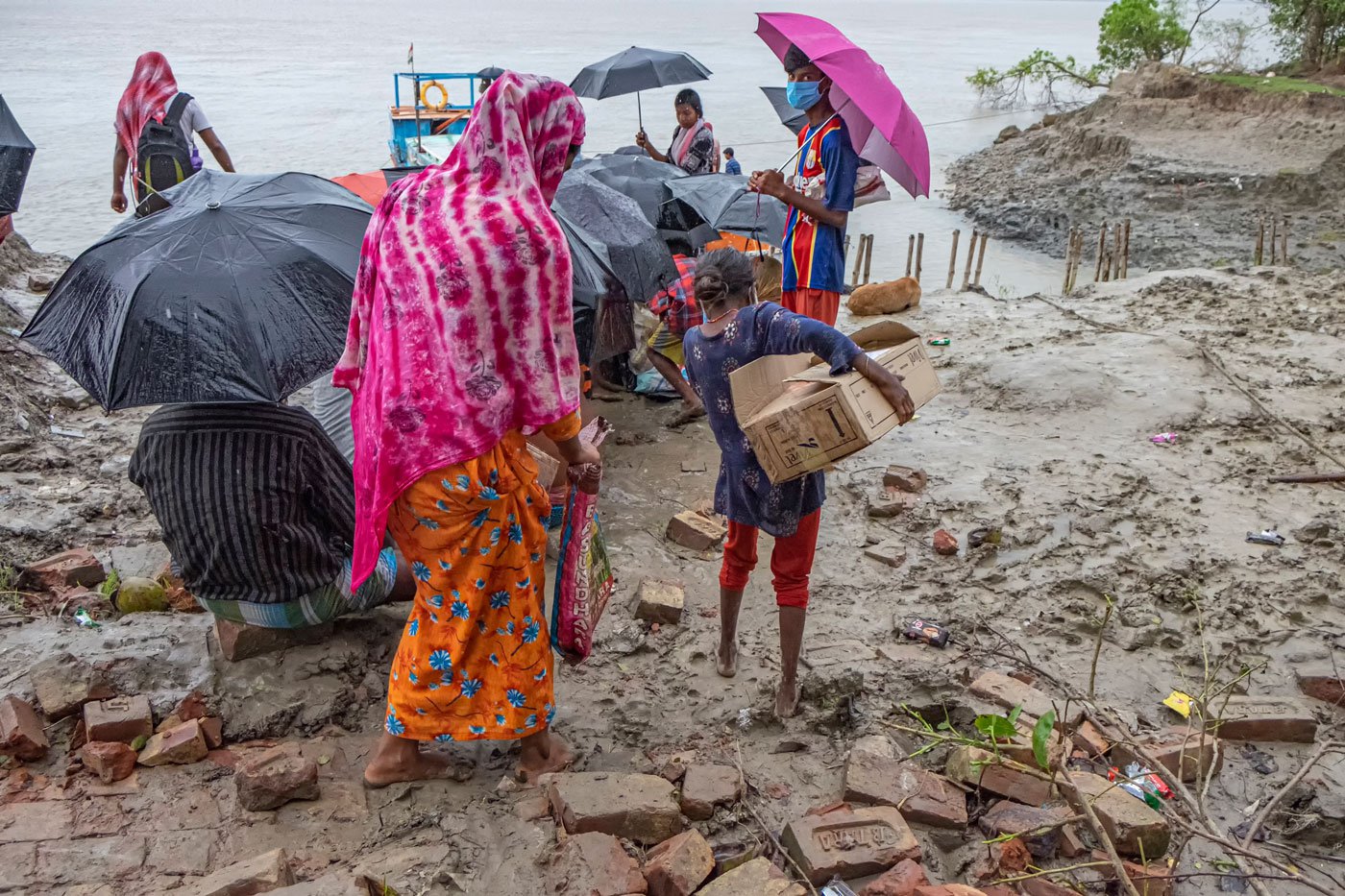
People gather in the rain to receive food packets from a relief boat at Khasimara ghat
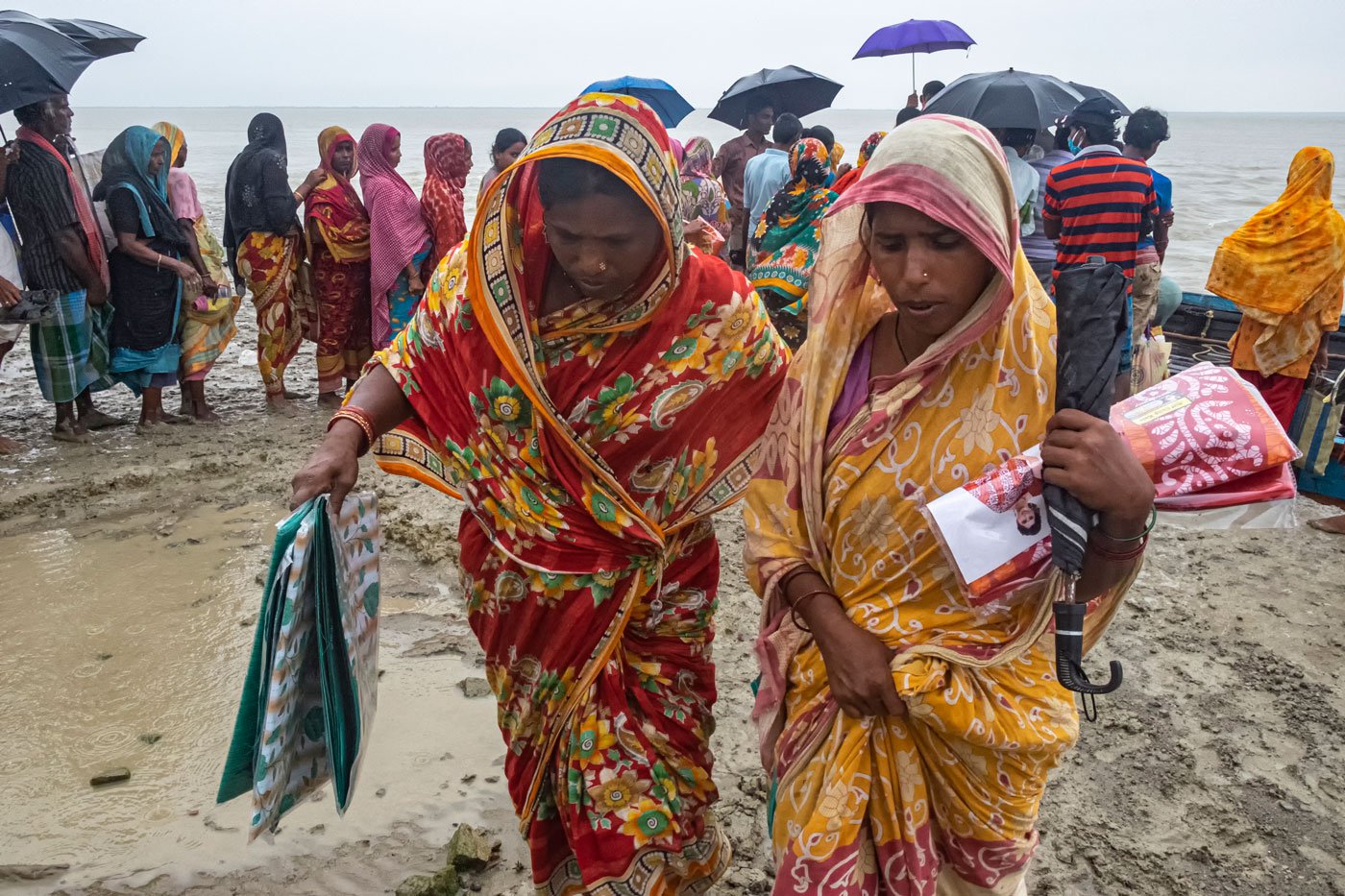
Women at Khasimara ghat collect saris being distributed by a voluntary organisation
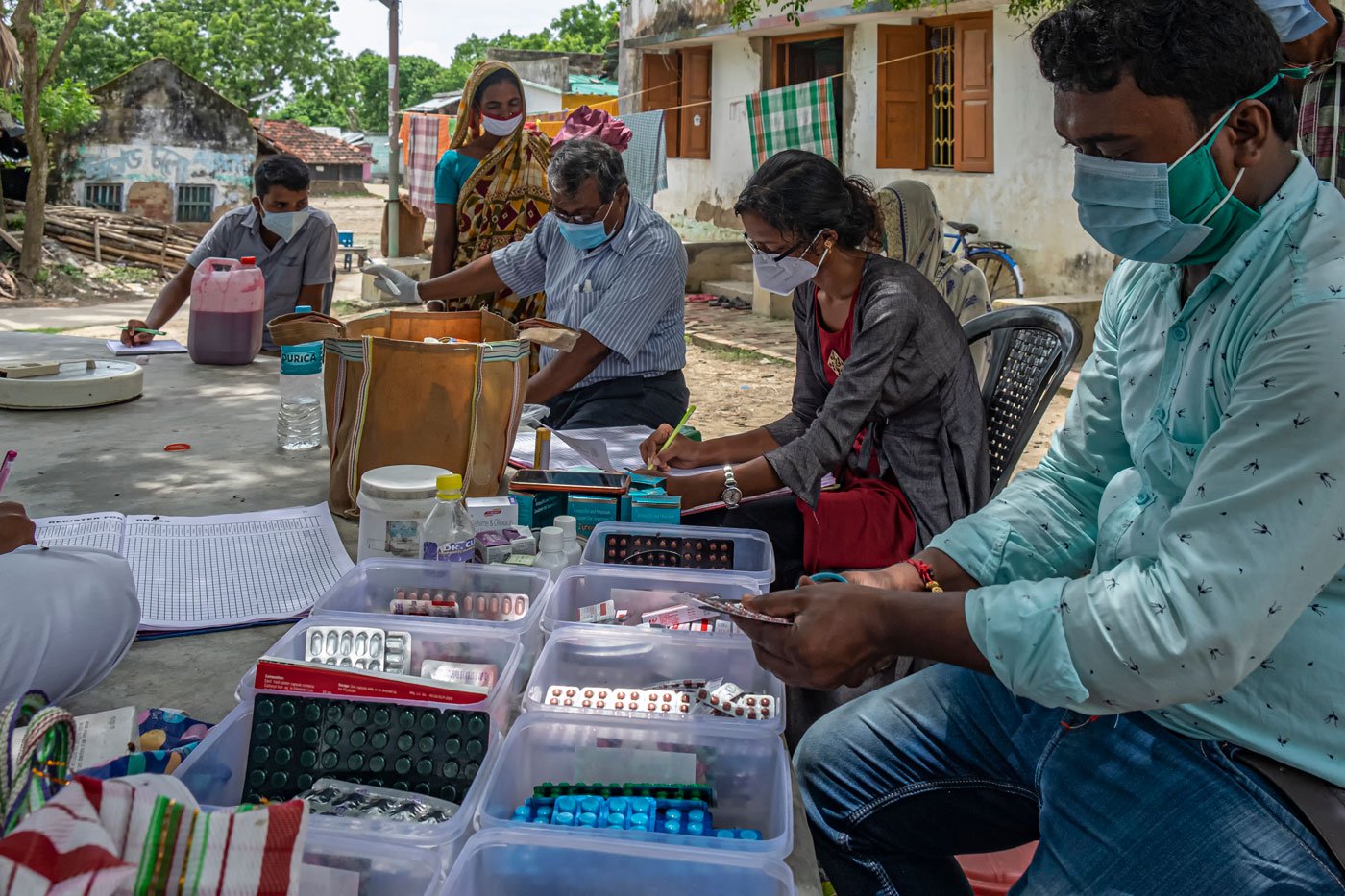
A medical team travels from Kolkata once a week to Ghoramara's sole primary health centre, near Mandirtala. At other times, people rely on ASHA workers for medical support
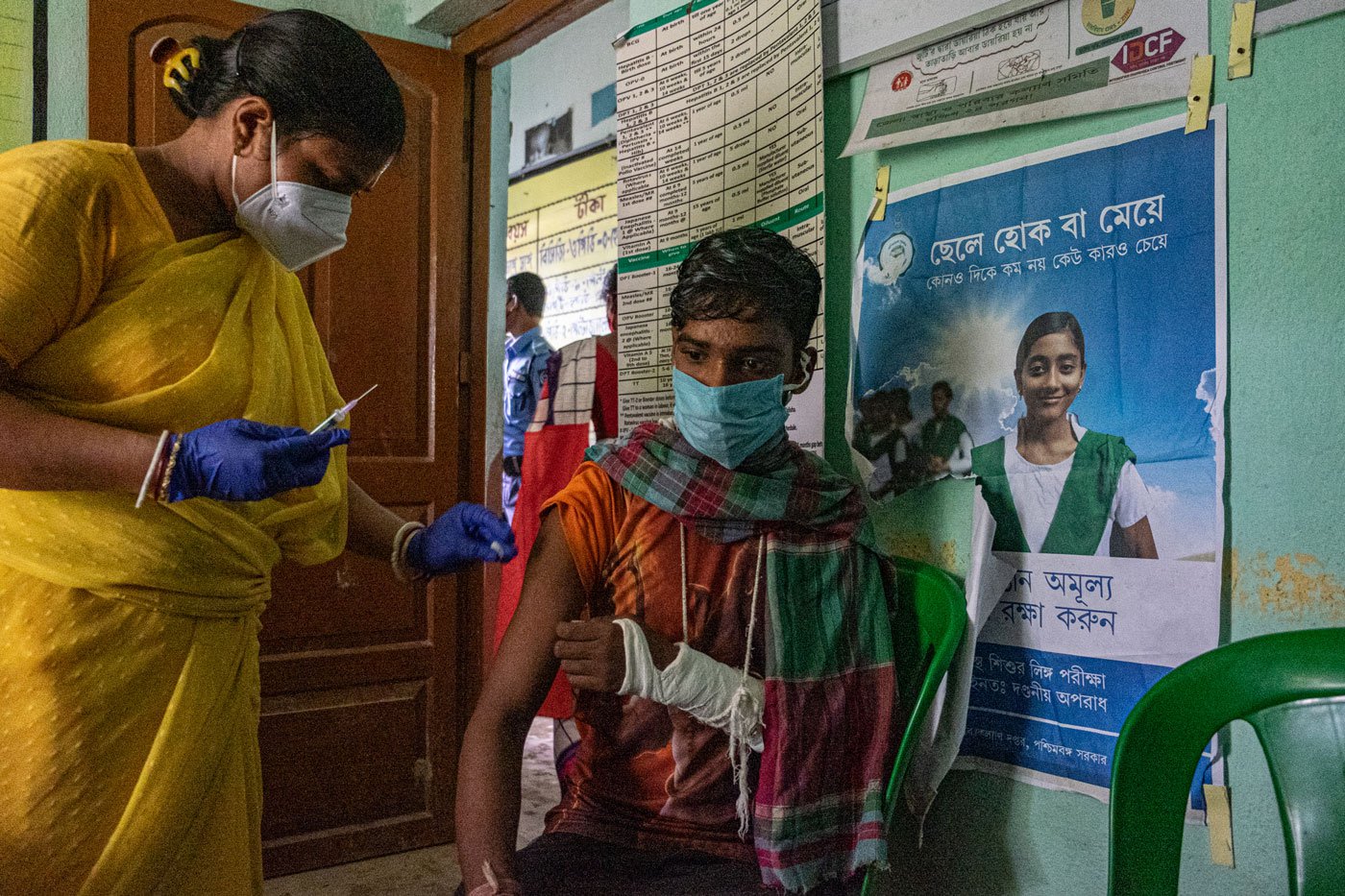
Covid vaccination in progress at the PHC on September 9. It was the 17th such camp organised in Ghoramara
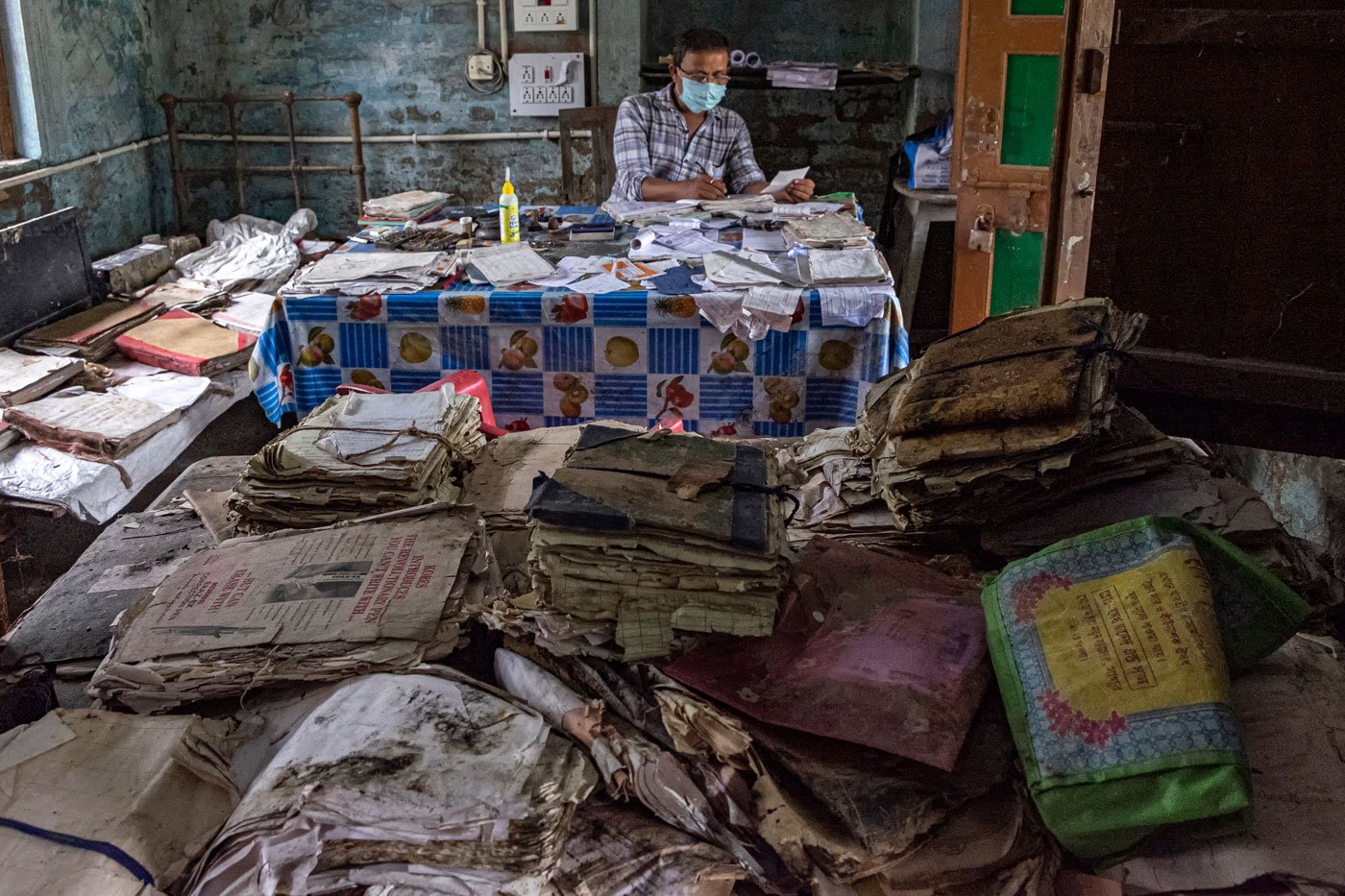
The postmaster of Ghoramara's Mud Point Post Office, which retains the name given by the British, travels 75 kilometres from Baruipur every day to reach his workplace. Papers and files at the post office become damp due to high humidity, and so they are kept out to dry
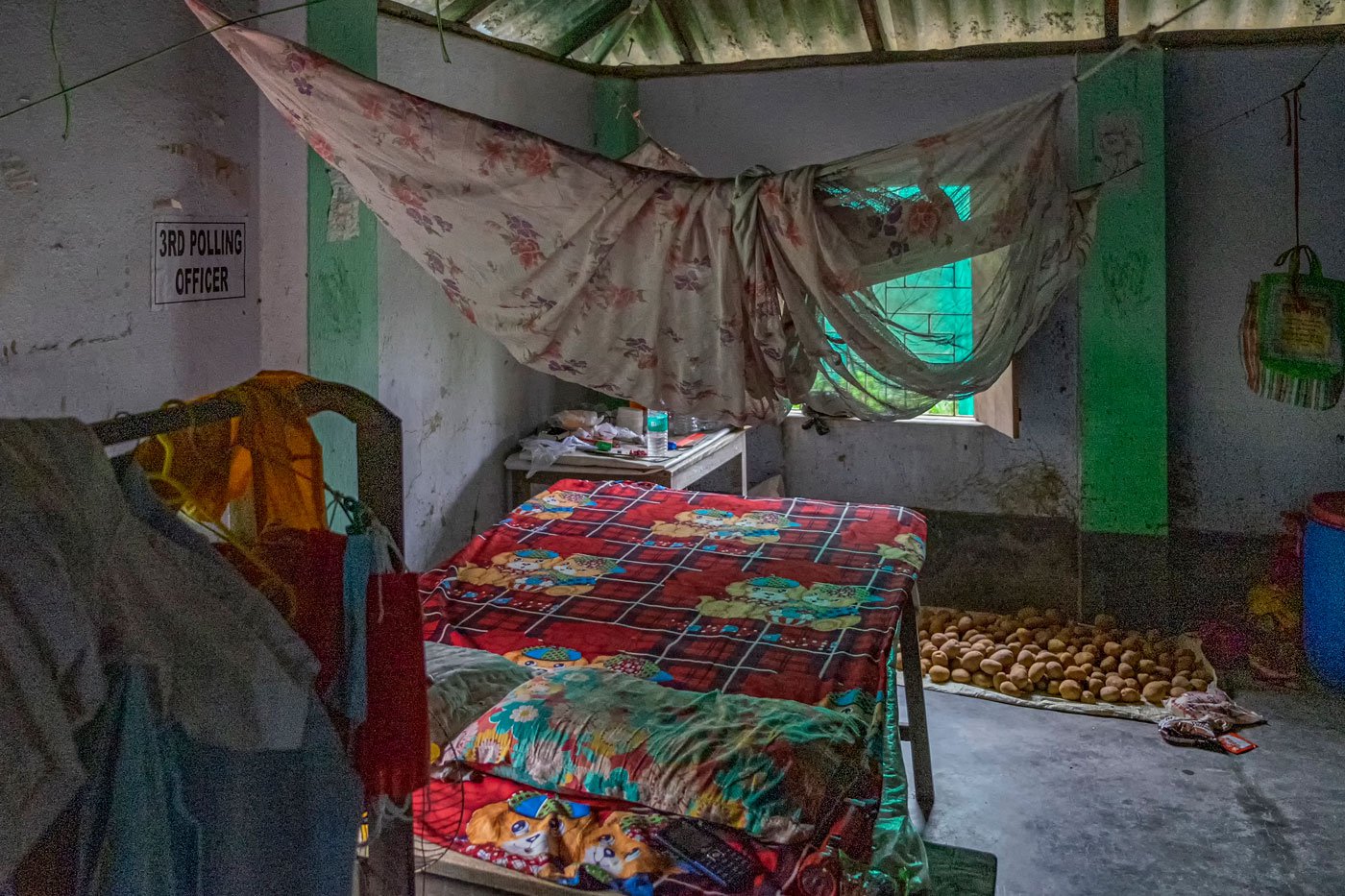
A classroom in Ahalya Shishu Shiksha Kendra is now furnished with beds and serves as a storage area for vegetables. The school in Mandirtala has been closed since the outbreak of Covid-19

Behind the ration shop in Khasimara, sacks of rice and wheat are left to dry in a field of betel crop that was destroyed by saline water. The smell of deteriorating crops is all over
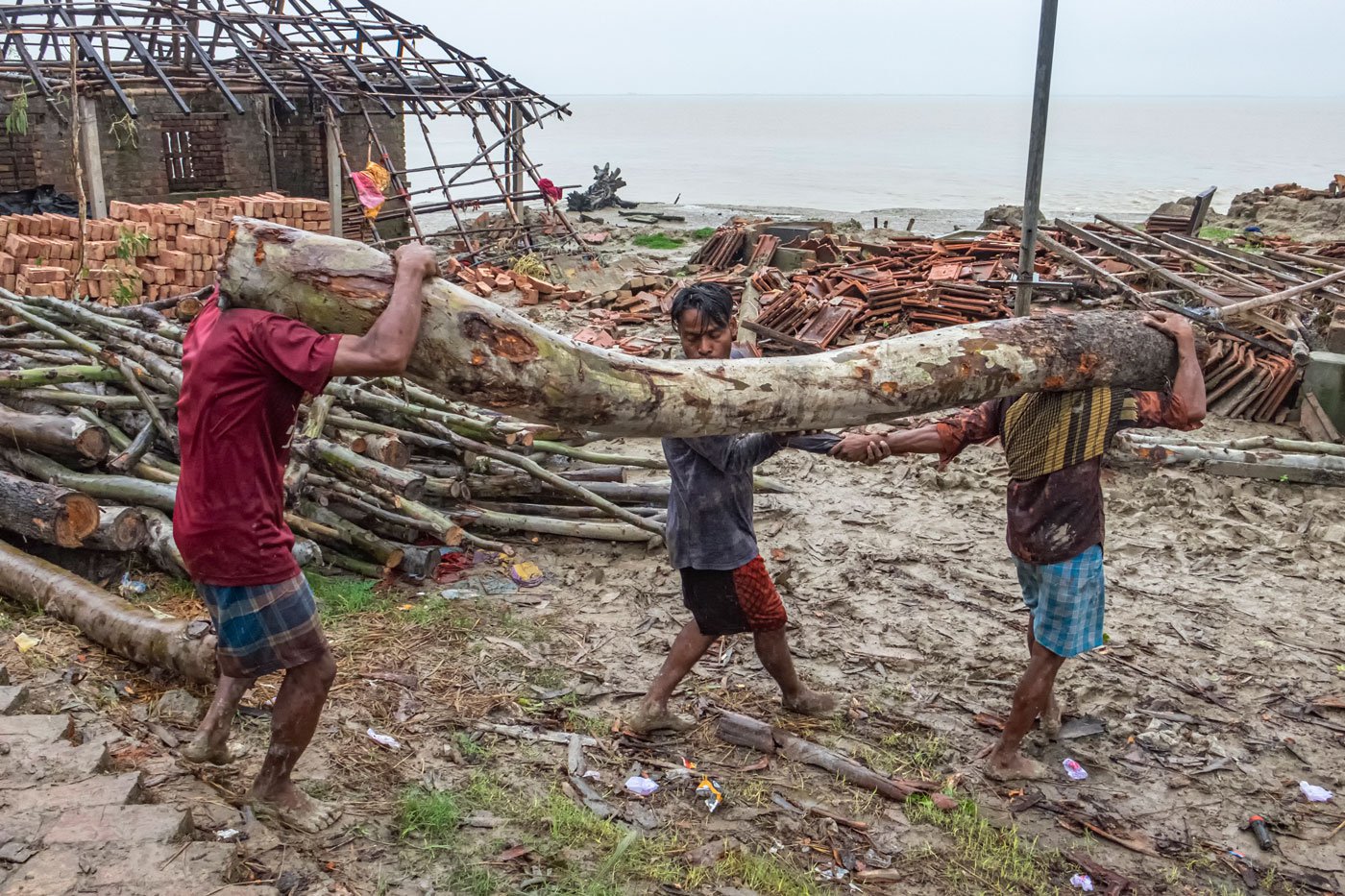
Villagers near Khasimara ghat try to salvage what is left of a tree uprooted by the cyclone
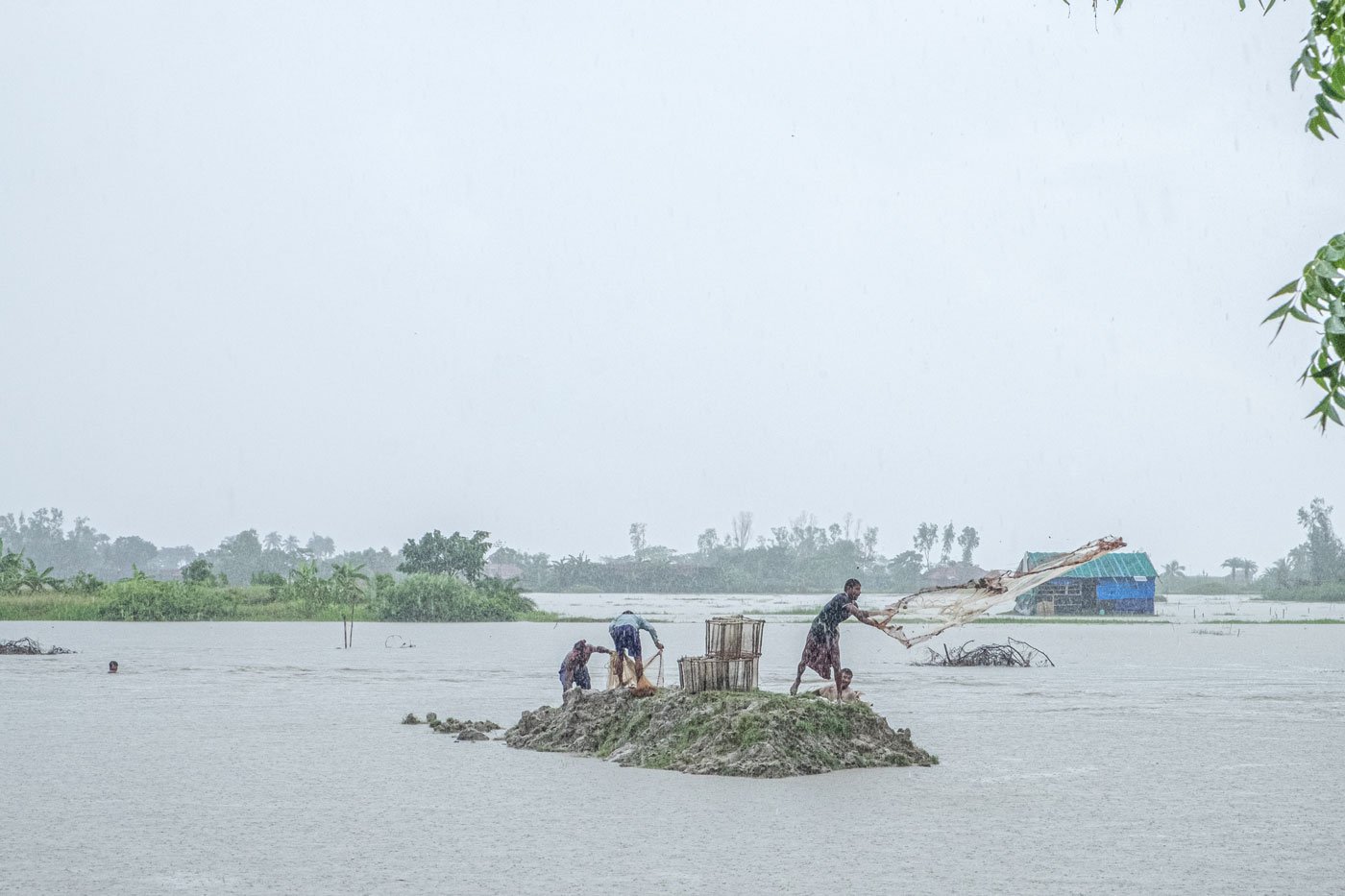
Residents of Chunpuri area throw nets to catch fish. The struggle for survival continues in Ghoramara
